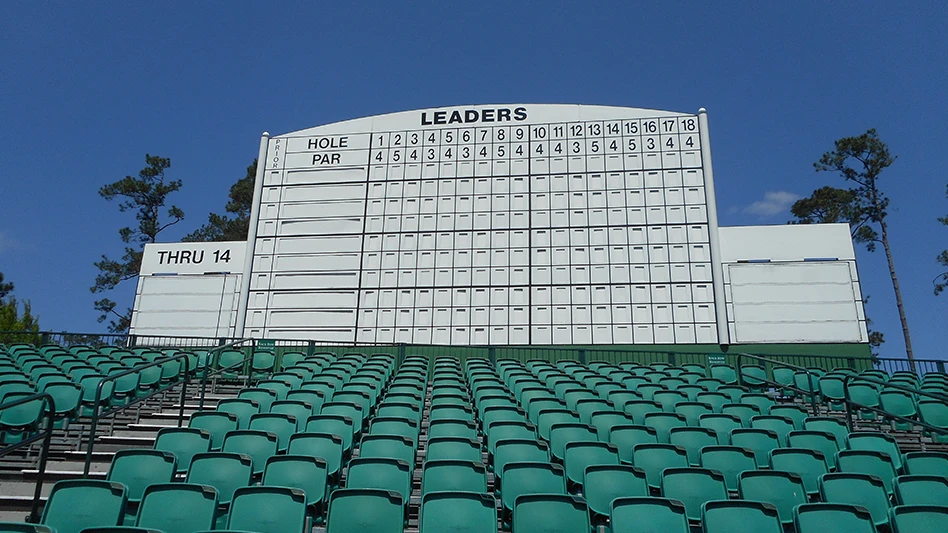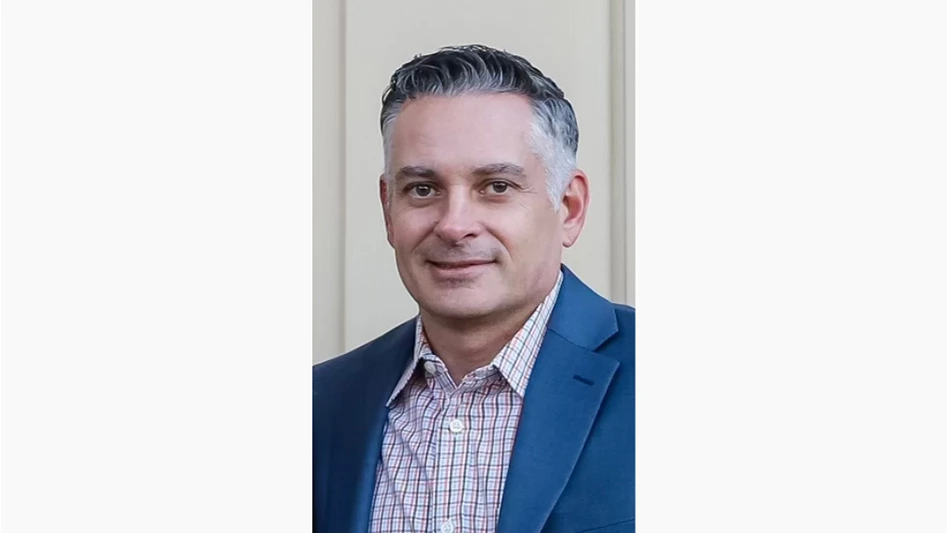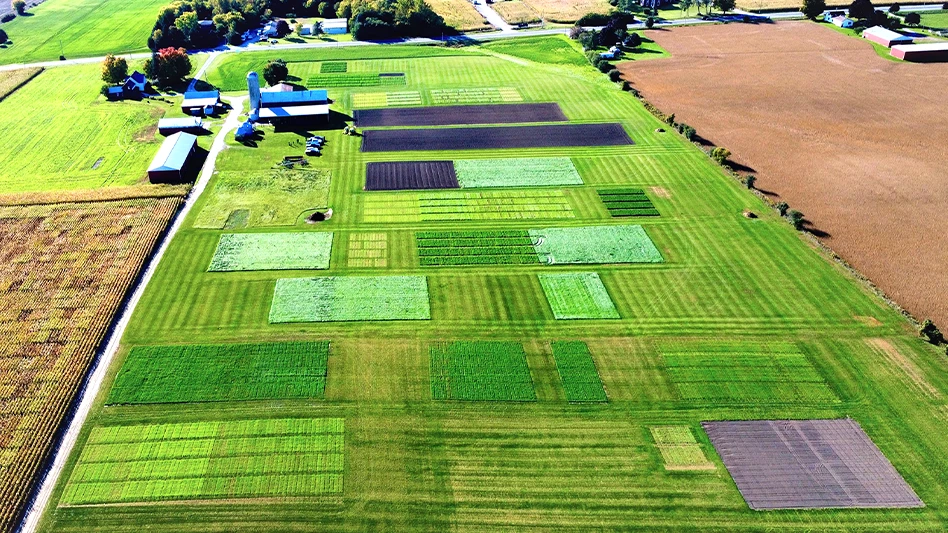
Few golf course superintendents spent their COVID times as productively as Brad Sim. The native Australian, who looks after the magnificent 18 holes at Cape Kidnappers Golf Course, spent New Zealand’s not-insignificant lockdown periods rebuilding and regrassing his greens. When that was finished, Sim and his in-house crew stripped nearly 50 acres of fairway turf, reseeded them and grew them back in.
“In-house” doesn’t mean they did it alone. Sim and his team leaned on the green-shaping expertise of original architect Tom Doak and his ace shaper Angela Moser, with mechanized help from a couple drill seeders and a turf cutter from Wellington’s Sky Stadium.
“I still owe them a round of golf,” Sim says. “The total price tag was quite reasonable, for what we achieved, because we’re already paying the crew we have on staff here. We hired a contractor to help with the fairway stripping. And we invested in the second drill seeder. But the crews here were magnificent and this course has never looked or played better.”
North American superintendents will remember the pandemic for the participation boom it sparked, as golf was among the outdoor activities that could be undertaken despite lockdown requirements. The same held true in New Zealand, but the circumstances there proved quite different. For starters, two major lockdowns remained in place longer. New Zealand is a big country, but it’s home to just 4 million residents and approximately 250,000 golfers. Kiwis also played a lot of golf during the pandemic, yet they didn’t travel too far to do so.
“We were open during most of the lockdown, but business was slow,” says director of golf Ray Geffre, an American who notes that Cape Kidnappers is a resort track where, traditionally, 80 percent of the round revenue is generated by international visitors. “With no one coming in or out of the country, there weren’t a lot of golfers here. That summer of 2021-22 was actually the perfect opportunity to regrass the golf course.”

Sim’s background only made the argument for in-house regrassing stronger. Having grown up in New South Wales and armed with a turf management qualification, Sim spent nearly two years building The Grove, an 18-hole facility in London, England. After a maintenance gig at Cape’s sister course, Kauri Cliffs Golf Course, Sim served as construction and grow-in manager at The Els Club Dubai, eventually transitioning to assistant course superintendent duties there. His next move — to the Jack Nicklaus-designed The Australian Golf Club, outside Sydney — coincided with the club’s comprehensive renovation.
“The fairway regrassing at Cape was a big job to tackle in-house, but apart from that and some complications owing to COVID matters, I felt quite comfortable,” says Sim, who estimates the greens project took five weeks and fairways 10. The crew broke ground Dec. 14, 2021, and reopened the golf course July 1, 2022. “The good thing about the fairway project was, we didn’t have to change anything — meaning no changes to the existing irrigation infrastructure,” he adds. “Our biggest problems were cyclone-type events that washed us out twice. Otherwise, we would have been done six weeks earlier.”
The 18 holes at Cape Kidnappers were designed by Doak and opened in 2004. The architect has since created other New Zealand designs, but you never forget your first. While Cape has maintained its glittering reputation, Doak believes the course remains oddly misunderstood: “This is a course fairly ranked among the top 50 in the world, but I’ve found people have difficulty classifying Cape Kidnappers in their own minds — because it’s so different and distinct from anything else,” he says.
The course does occupy an utterly unique place between links and heathland genres. While much of the back nine strategically flirts with sheer, white cliffs that drop nearly 500 feet into Hawkes Bay, many holes flank deep, thickly vegetated ravines that, anywhere else, would represent a course’s most memorable physical features. Geffre says first-time visitors to Cape Kidnappers are often surprised by the breadth of amazing golf and terrain away from the cliff edges, not just canyons but flamboyant shaping, exotic vegetation and striking elevation changes in the form of natural swales and hillocks.
Sim and Geffre knew that Cape Kidnappers had a cumulative thatch problem exacerbated by the site’s heavy clay soil. Yet there were additional turf issues: poor performance during hot, dry summers; poor drainage in winter; ever-softer approach areas where balls were checking and not bouncing forward; and dry patch and its patchy appearance.
On the front end, ownership was determined to restore the firm and fast turf conditions that Doak created, because bounce and roll are vital to the strategic function of links designs, heathland deigns and hybrids like Cape Kidnappers. Working with Doak and Moser, Sim and his crews first rebuilt the putting surfaces from 4 inches down, thereby removing the thatch layer. Then Moser put the contours back exactly as they’d been before.
On the back end, Sim could see that bounce, roll and original contours weren’t the only things this renovation had restored.
“It was instructive to learn just how much the thatch was hindering us,” he says. “It showed us how little water was traveling through the thatch layer. We couldn’t get enough water to the soil. When we had the thatch, we’d have ¼ to ½ inch of rain and you could see it only penetrated about 60 percent of the thatch layer. The penetration today is 10 times better. That was sobering: to see that normal watering would be ¼ inch and not getting anywhere near the soil. That’s just not conducive to great conditions.”
As to the qualities of Pure Distinction, the “super bent” that replaced the older varieties at Cape Kidnappers, let’s just say Sim is a fan. “It was very hungry to start with because there was no organic matter there to feed itself. The greens looked ordinary for a time, but they putted fine. Now they look great and putt unbelievable.”
Cape and Kauri Cliffs are both on New Zealand’s North Island, but they are separated by more than 310 miles north to south. Kauri, where superintendent Andy Wood presides, enjoys a subtropical climate, where Cape is drier. Wood also resurfaced his greens during the pandemic, with Pure Distinction, to spectacular effect.
“The climates are a little bit different, but this grass loves them both,” Sim says. “It’s a bit drier here at Cape actually. Each course gets about the same amount of warmth, but it stays warmer a little bit longer up north. We’ll hit (86 degrees Fahrenheit), just like Kauri. But they’ll get an extra month or two of that. The blend we replaced at both courses consisted of older varieties. Today, they have their own super bent available, I believe. But we felt the Pure Distinction was the pick of the bunch. It’s just so fine and dominant. And I have to say, it’s just getting better by the week — tighter and tighter, and choking out all the weeds.”
The scale and duration of the fairway regrassing project at Cape only accentuated the effects of COVID, mainly around staffing. This dynamic also underlines how lockdowns in New Zealand differed from those that predominated in the United States and elsewhere. “The rules were tough,” Sim explains. “If any house had it, any individual in that household had to isolate for seven days. So, a lot of people who weren’t infected had to isolate anyway. Then they’d end up getting it a week later. Business-wise, it was the perfect decision to undertake all this work during the pandemic. But there were times when, restriction-wise, it was very tough.”
Most of those staffing issues surfaced later that southern summer of 2021-22. Seeding went off without a hitch, for example. Sim went with a four-way Browntop blend (Eggmont, Arrowtown, Manor and Sefton) from PGG Wrightson: “Some of these varieties had proven results on our property, but two had lighter tones to match the softer Pure Distinction. Everything seeded beautifully and germinated in short order. Six days in the ground and it was popping its head up.”
Despite the fact that Sim’s irrigation system was not affected and remained perfectly operational, he and his crews were obliged to essentially hand-water all 50 acres of newly germinated fairways and green surrounds for two months.
“Watering proved a little tough because it was the middle of summer,” Sim says. “The soil profile here has a high clay-to-loam ratio. It gets a bit boggy in the winter, but we get very hard in the summer and water runs straight off the top. We couldn’t irrigate the new fairways in anything more than one-minute cycles — or most of the water would just run off and away. The good news is, apart from our cyclone events, it didn’t go anywhere in the rain. The profile handled normal rains very well, but we had to be careful if we watered too much.”
About those cyclone events: From March 23 to 29, 2022, Cape Kidnappers received nearly 8 inches of rainfall. In all, it absorbed 10 inches in March. Several drains washed out and the seed was too young to handle the traffic of fixing them. Addressing those spots delayed the reopening. But these issues frankly paled beside the daily watering grind.
“It was one-minute cycles for eight weeks,” Sim says. “We didn’t automate. It was all by hand and by eye because of our soil issue — and because the ridges were drier and the swales more moist. Once we were all seeded, we had guys methodically moving through each nine, turning on individual sprinklers: one minute and move, one minute and move. … When they’d each finished the loop, we’d send them out on the other nine — in the hot, baking sun. We did that for eight weeks.
“Nothing ever goes perfectly. Sometimes we are too close to see the improvements. It’s impossible to not stress — just don’t panic. The watering is a good example. That’s an extraordinary amount of attention over such a long period. But we couldn’t be happier with the results.”
Sim’s boss couldn’t agree more. “The fairways were a huge undertaking — just an enormous volume of turf for an in-house crew to peel back, dispose of and replant,” Geffre says. “These guys averaged a hectare a day during the fairway projects. That’s more than two acres a day. That the entire project was undertaken and completed under COVID conditions? Well, my hat’s off to Brad and his crews. They did an amazing job.”


Explore the June 2023 Issue
Check out more from this issue and find your next story to read.
Latest from Golf Course Industry
- GCSAA announces Grassroots Ambassador Leadership Award recipients
- Reel Turf Techs: David Gummo
- PBI-Gordon promotes two to executive level
- VIDEO: A First Green morning
- Bloom Golf Partners adds HR expert
- Seeking sustainability in Vietnam
- Kerns featured in Envu root diseases webinar
- Toro continues support of National Mayor’s Challenge for Water Conservation





